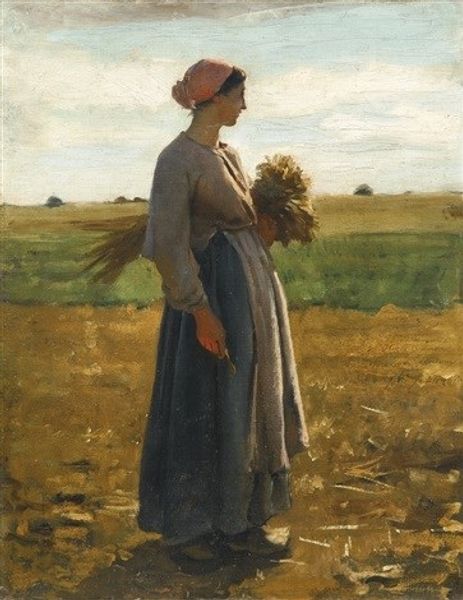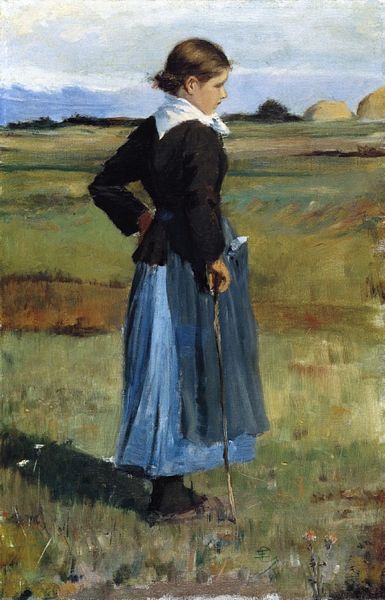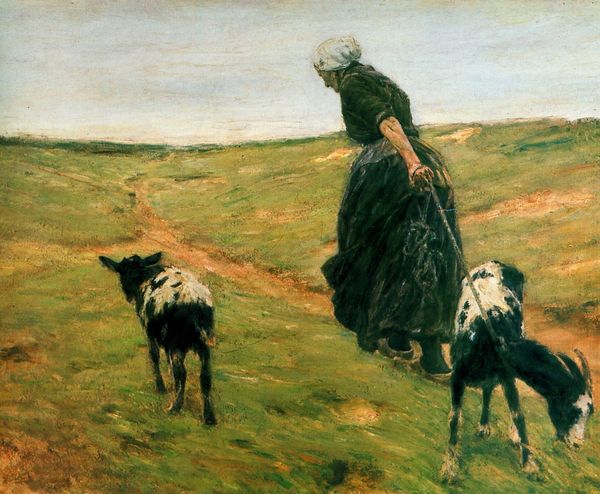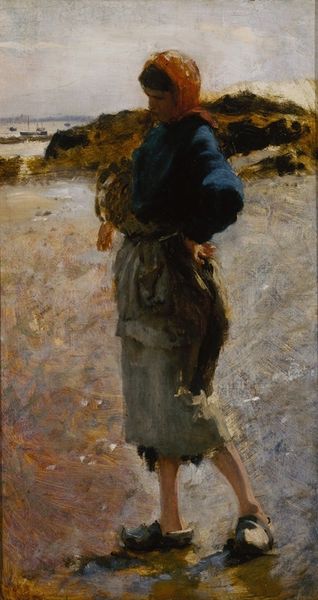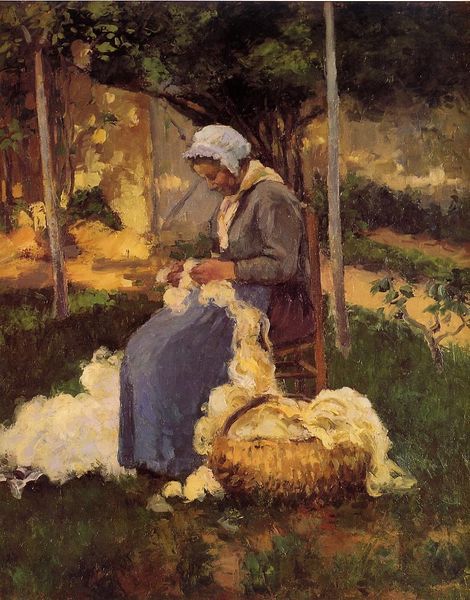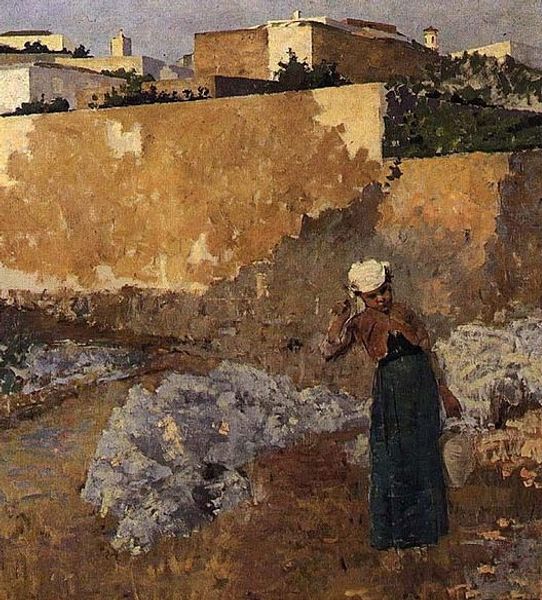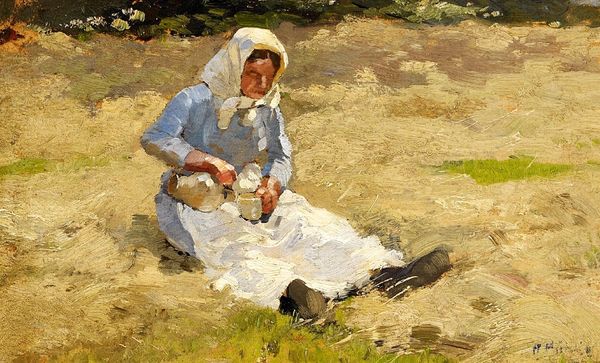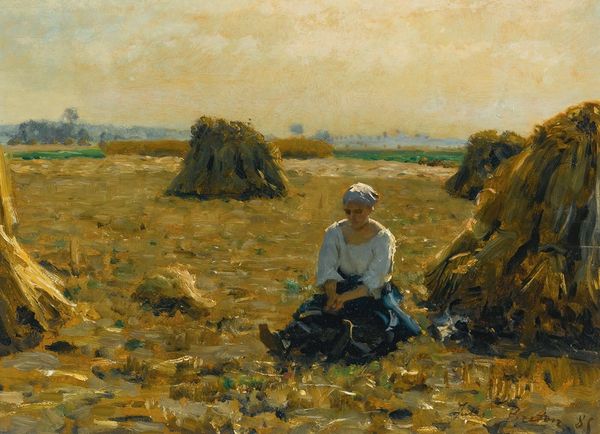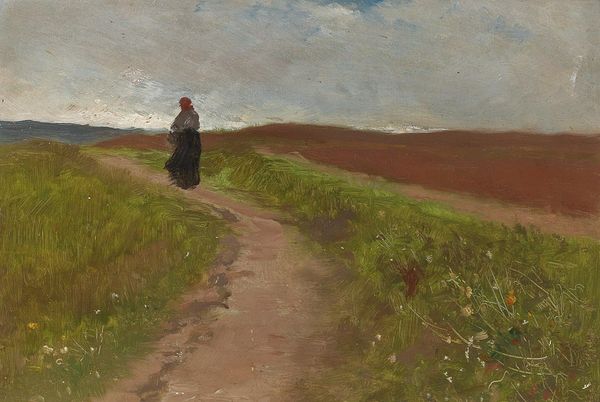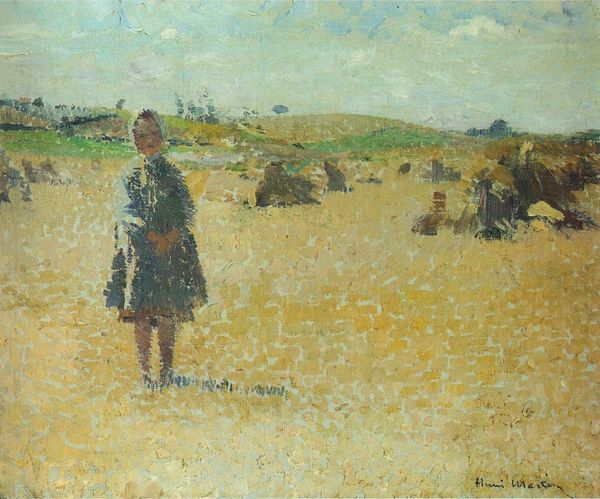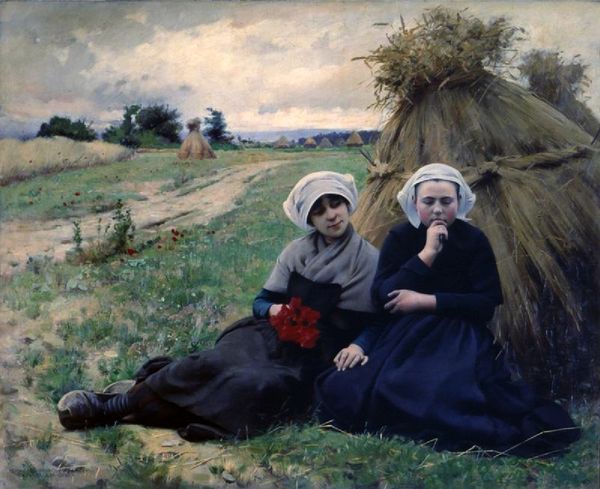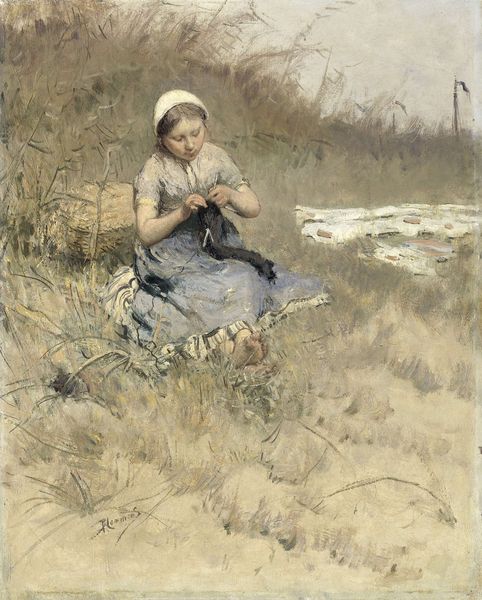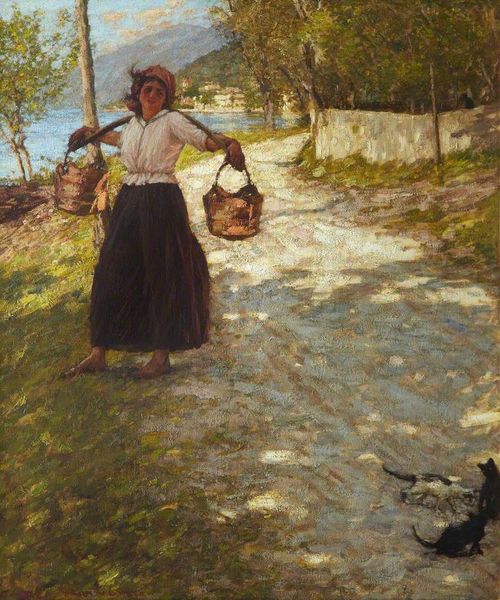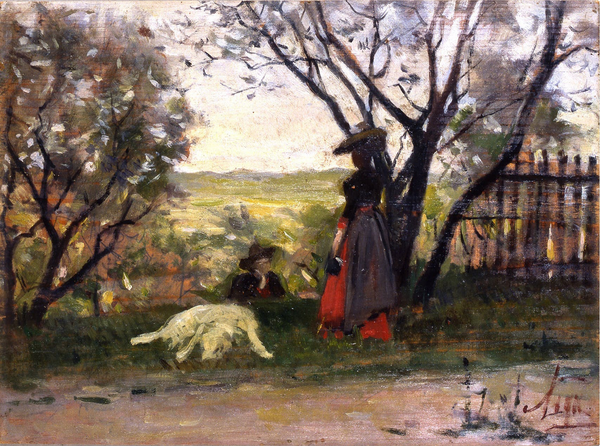
Dimensions: support: 914 x 609 mm frame: 1050 x 748 x 65 mm
Copyright: CC-BY-NC-ND 4.0 DEED, Photo: Tate
Editor: This is "Berwickshire Field-workers" by Edward Arthur Walton. The figures seem weighed down, and the palette feels very earthy. What stands out to you about this painting? Curator: The painting evokes the harsh realities of agricultural labour, doesn’t it? The woman's posture and the obscured faces of the workers highlight their anonymity. Walton's work invites us to consider the intersection of gender, class, and labour in rural Scotland. How might this image challenge romantic notions of rural life? Editor: I hadn't considered the romanticized aspect of it at all. Now I see how the painting pushes against that. Curator: Exactly. It's a powerful social commentary, subtly embedded within what appears to be a simple landscape. The painting speaks volumes about the unseen struggles of working-class women. Editor: Thanks, I will remember that.
Comments
tate 6 months ago
⋮
http://www.tate.org.uk/art/artworks/walton-berwickshire-field-workers-t03447
Join the conversation
Join millions of artists and users on Artera today and experience the ultimate creative platform.
tate 6 months ago
⋮
The curious bonnets worn by the field workers are called 'uglies'. Made of a cane framework with cotton stretched over it, they were used to protect the wearer from the sun. They were worn both in Scotland and south of the border, and were still in use well into the twentieth century.The artist has used the square brush and short horizontal strokes that were characteristic of many of the rural naturalists. Walton was one of the group of Scottish artists that included Guthrie, Lavery and Hornel, who were known as the 'Glasgow Boys'. They exhibited at the NEAC as allies of the Impressionist clique, but resigned after an argument. Gallery label, August 2004
